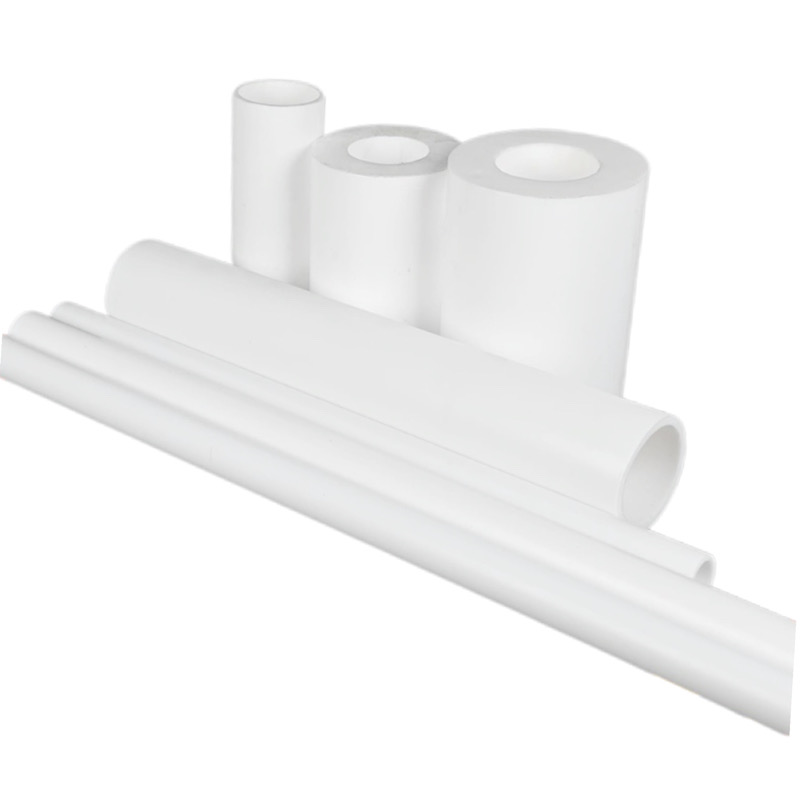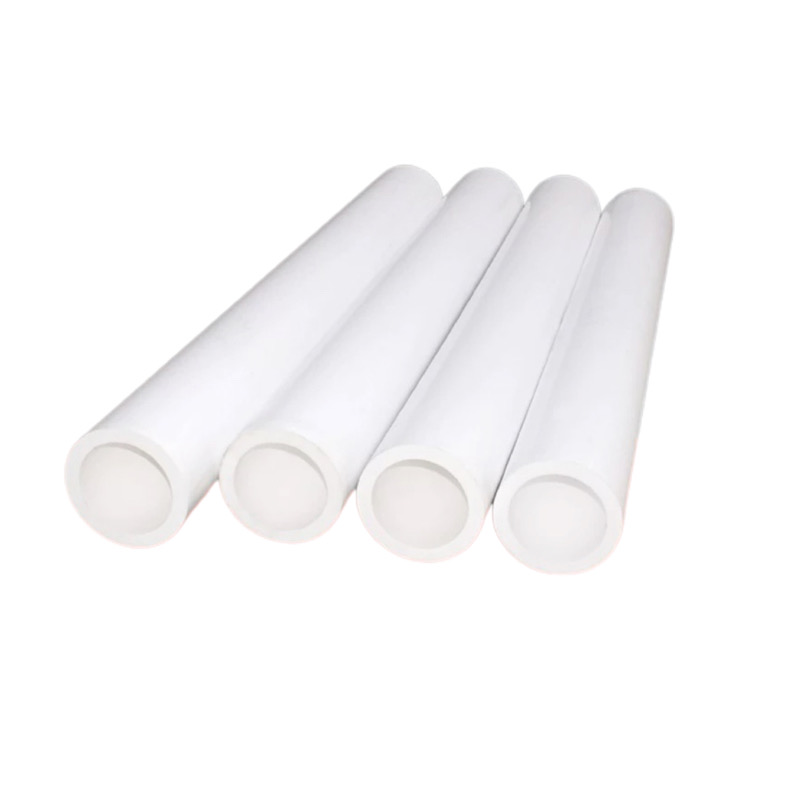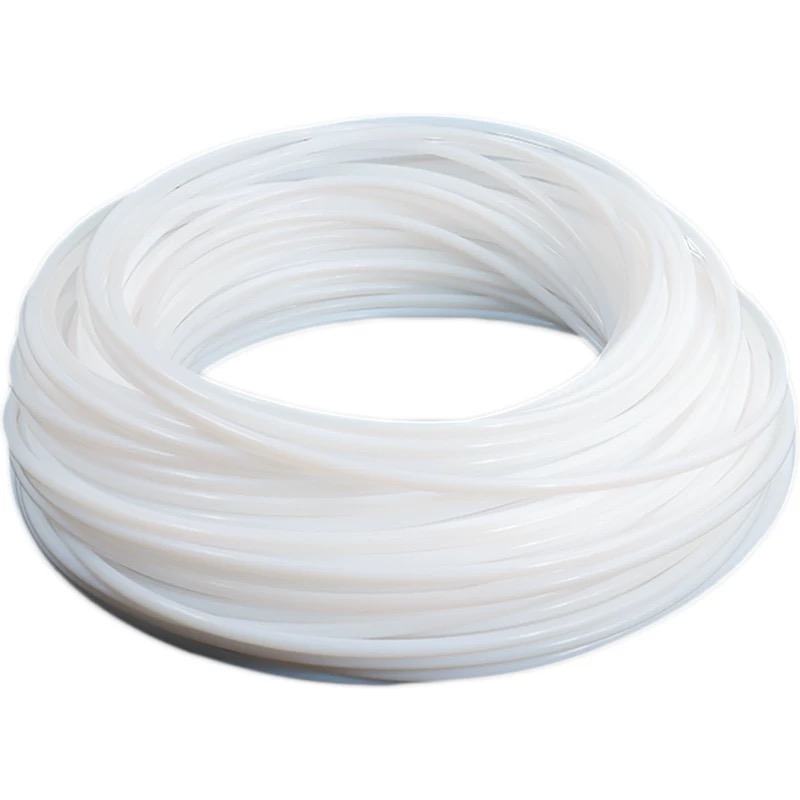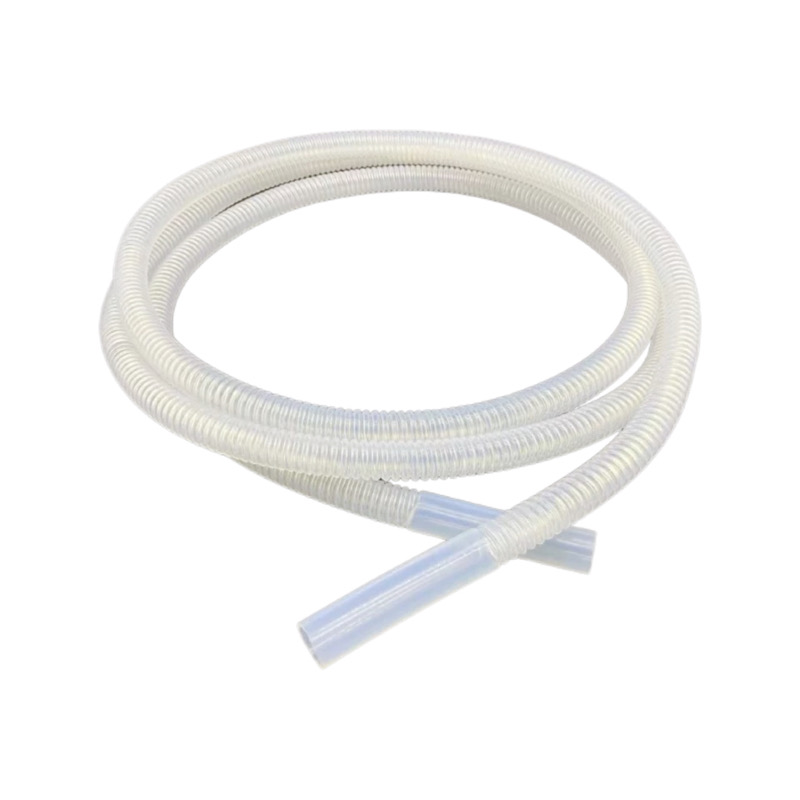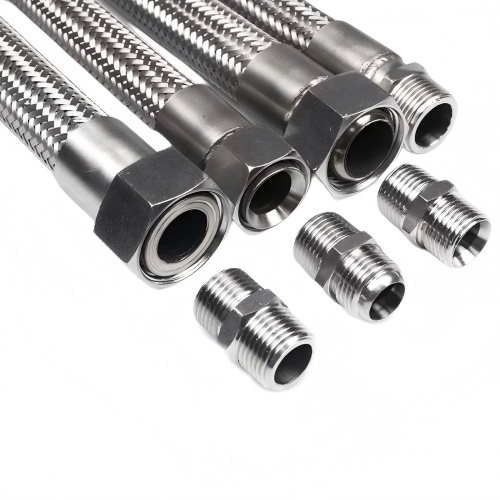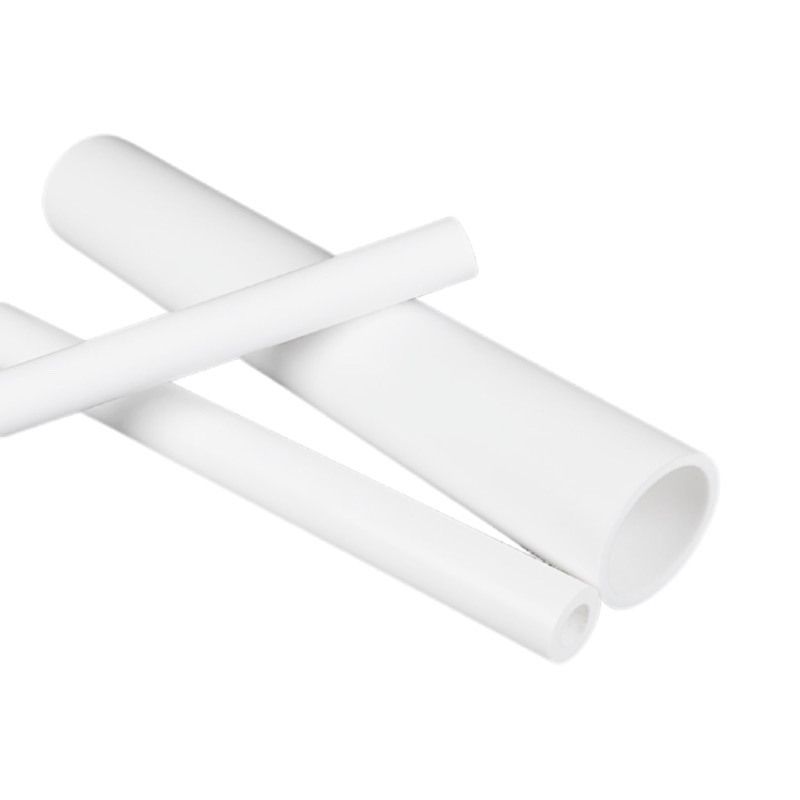Properties of PTFE Tube
- Chemical resistance: Almost does not react with any chemical substances
- Wide temperature range: From -328℉ to 500℉ as well as -200℃~260℃
- Electrical insulation: Suitable for satellite cables
- Non-stick surface: Adhesive-resistant material conveying tube, Food convey belt, Medical fluid delivery tube
- Self-lubrication: The friction coefficient is 0.04
- Weatherability: Strong climate adaptability
Reliable PTFE Tube Manufacturer
Our PTFE Tube has many types, according to the processing methods, it can be classified into molded tubes,extruded tubes and pressed tubes. We also offer customization services and can cut to your desired dimensions. In addition, we have specialized processing equipment that allows us to cut products into any shape. Besides size customization, we also accept custom material requests — PTFE mixed with graphite, carbon powder, copper powder, and more are all within our scope of services. At Hansa, we are committed to sincere service and honest business practices, striving to meet your needs to the greatest extent possible.
More Different Type of PTFE Tube You an Order From Hansa

Extruded from a specific mold to form continuous profiles, the product is relatively slender and elongated.

Pressure is applied using a plunger, producing a slender, strip-shaped product that can be bent into coils.

With an inner diameter of 0.3–1 mm and high dimensional accuracy, it falls under the category of micro tubing.

Combines the corrosion resistance of PTFE with the flexibility and expandability of a corrugated tube.

Place the PTFE resin into a tubular mold for cold pressing, then fuse it through high-temperature sintering, and finally cool it down to form the final shape.

A high-performance tube composed of an inner PTFE layer and an outer stainless steel braided layer, where the stainless steel provides pressure resistance and impact protection.
Key Features of PTFE Tube

Exhibits corrosion resistance capable of withstanding aggressive agents and the majority of chemical media (pH 0-14).

Demonstrates favorable compressive and creep resistance at ambient temperatures, though may soften under elevated temperatures, suitable for low-stress applications.

Operational range spans from -200°C to +260°C for sustained service, with short-term exposure tolerance up to 300°C.

Coefficient of friction (COF) as low as 0.04, featuring a smooth surface with self-lubricating properties that eliminate the need for external lubricants.
Applications of PTFE Tube
Chemical Industry: Transport of highly corrosive media, high-purity chemical reagents, and connecting conduits for reaction vessels
Electronics: Insulating sleeves for wires and cables, insulation layers for circuit boards, and anti-static protection
Medical: Medical liquid delivery tubing and artificial blood vessel fabrication
Food Industry: Piping for food processing equipment and transport tubes
Machinery: Sliding bearings, bushings, liners, piston rings, and guide rings
Aerospace: Fuel delivery pipelines

Specifications of PTFE Tube From Hansa
- Size Descriptions
- Main Properties
| Type | Outside Diameter(mm) | Inside Diameter(mm) | Wall Thickness(mm) | Length(mm) |
| PTFE Molded Tube | 30-1230 | 10-997 | 5-117 | 100-300 |
| PTFE Extruded Tube | 12-420 | 5-400 | 3.5-10 | 1000,4500 |
| PTFE Pressed Tube | 2-29 | 1-25 | 0.5-2 | As Request |
| PTFE Capillary Hose | 0.76-9.38 | 0.25-8.26 | 0.255-0.56 | 305m/153m/100m |
| Properties | Unit | Result |
| Apparent density | g/m³ | 2.10-2.30 |
| Tensile strength(min) | Mpa | 18.0 |
| Elongation at break(min) | % | 230 |




